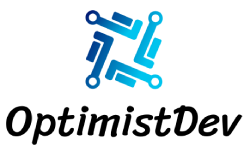Mastering PHP OOP: A Beginner’s Guide to Object-Oriented Programming
Mastering PHP OOP: A Beginner’s Guide to Object-Oriented Programming
Object-Oriented Programming (OOP) has revolutionized how developers approach coding, particularly in PHP. The shift from procedural programming to OOP in PHP brings flexibility, scalability, and easier maintenance to applications. In this article, we’ll explore the fundamental concepts of Object-Oriented Programming (OOP) in PHP, providing a comprehensive introduction for beginners. By the end of this guide, you’ll understand how to create classes and objects, work with methods and properties, and employ OOP principles like inheritance, polymorphism, and encapsulation.
Seeking a Website Developer for your business. We’re here to seamlessly transition your business into the digital world with tailored expertise. Elevate your online presence with us
What is Object-Oriented Programming?
Object-Oriented Programming (OOP) is a programming paradigm that structures code around objects rather than actions. An object in programming is a data structure that contains both data (properties) and functions (methods) that manipulate that data. OOP allows you to break down complex applications into smaller, manageable objects that represent real-world entities.
Key Concepts of OOP in PHP
Let’s break down the core concepts of Object-Oriented Programming and understand how they work in PHP.
1. Classes and Objects
A class in PHP is a blueprint for objects. It defines a set of properties and methods that the objects created from the class will have. An object, on the other hand, is an instance of a class. Think of a class as a blueprint of a house and objects as the houses built using that blueprint.
Example: Creating a Class and Object
<?php
class Car {
public $make;
public $model;
public $year;
public function startEngine() {
return "The engine is started.";
}
}
// Creating an object from the class
$myCar = new Car();
$myCar->make = "Toyota";
$myCar->model = "Corolla";
$myCar->year = 2021;
echo $myCar->startEngine(); // Output: The engine is started.
?>In the code above, we defined a Car class with three properties: make, model, and year. The startEngine method simulates starting the car’s engine. We then created an object $myCar using the Car class and accessed its properties and methods.
2. Properties and Methods
In OOP, properties are variables that belong to a class, while methods are functions that belong to a class. Properties represent the state or characteristics of an object, and methods represent the behavior of the object.
Access Modifiers: public, private, protected
Access modifiers control the visibility of properties and methods from outside the class. There are three access modifiers in PHP:
public: The property or method can be accessed from anywhere.private: The property or method can only be accessed within the class.protected: The property or method can be accessed within the class and by classes derived from that class.
Example: Using Access Modifiers
<?php
class BankAccount {
private $balance = 0;
public function deposit($amount) {
$this->balance += $amount;
}
public function getBalance() {
return $this->balance;
}
}
$account = new BankAccount();
$account->deposit(1000);
echo $account->getBalance(); // Output: 1000
?>Here, the $balance property is private, meaning it cannot be directly accessed outside the class. However, we can manipulate it using the deposit method and retrieve its value through the getBalance method.
3. Constructors and Destructors
A constructor is a special method that gets called automatically when an object is created. It’s useful for initializing properties of a class when an object is instantiated. A destructor, on the other hand, is called when the object is destroyed, typically used for cleanup activities.
Example: Constructor and Destructor
<?php
class Person {
public $name;
public function __construct($name) {
$this->name = $name;
echo "Hello, " . $this->name . "!";
}
public function __destruct() {
echo "Goodbye, " . $this->name . "!";
}
}
$person = new Person("John"); // Output: Hello, John!
// When the script ends, destructor is called: Goodbye, John!
?>4. Inheritance
Inheritance allows a class (child class) to inherit properties and methods from another class (parent class). It promotes code reusability and enables extending functionalities without modifying the original class.
Example: Implementing Inheritance
<?php
class Animal {
public $name;
public function speak() {
echo "Animal sound";
}
}
class Dog extends Animal {
public function speak() {
echo "Bark!";
}
}
$dog = new Dog();
$dog->speak(); // Output: Bark!
?>Here, the Dog class extends the Animal class and overrides the speak method.
5. Polymorphism
Polymorphism allows objects of different classes to be treated as objects of a common parent class. It is achieved through method overriding and interfaces.
Example: Polymorphism in Action
<?php
class Shape {
public function draw() {
echo "Drawing a shape.";
}
}
class Circle extends Shape {
public function draw() {
echo "Drawing a circle.";
}
}
class Square extends Shape {
public function draw() {
echo "Drawing a square.";
}
}
function drawShape(Shape $shape) {
$shape->draw();
}
drawShape(new Circle()); // Output: Drawing a circle.
drawShape(new Square()); // Output: Drawing a square.
?>6. Encapsulation
Encapsulation is the practice of bundling data (properties) and methods that operate on the data within a class, while restricting access to certain properties and methods. This helps protect the internal state of the object and ensures controlled access.
Example: Encapsulation
<?php
class Employee {
private $salary;
public function setSalary($amount) {
if ($amount > 0) {
$this->salary = $amount;
}
}
public function getSalary() {
return $this->salary;
}
}
$employee = new Employee();
$employee->setSalary(5000);
echo $employee->getSalary(); // Output: 5000
?>7. Abstraction
Abstraction involves creating classes that are not meant to be instantiated directly. Instead, they serve as blueprints for other classes. In PHP, abstraction is achieved through abstract classes and interfaces.
- Abstract Class: A class that cannot be instantiated and contains abstract methods that must be implemented by derived classes.
- Interface: A contract that defines methods that must be implemented by any class that implements the interface.
Example: Abstraction with an Abstract Class
<?php
abstract class Vehicle {
abstract public function drive();
}
class Car extends Vehicle {
public function drive() {
echo "Driving a car.";
}
}
$car = new Car();
$car->drive(); // Output: Driving a car.
?>Key Points to Remember:
- Class and Object: Classes are blueprints; objects are instances of classes.
- Access Modifiers: Control access to properties and methods.
- Constructors/Destructors: Special methods for initializing and cleaning up.
- Inheritance: Reusing code through extending classes.
- Polymorphism: Treating different objects through a common interface.
- Encapsulation: Protecting the internal state of objects.
- Abstraction: Using abstract classes and interfaces for code flexibility and enforcement of method implementation.
Conclusion
Mastering Object-Oriented Programming in PHP opens the door to building complex, scalable, and maintainable applications. Understanding classes, objects, inheritance, polymorphism, encapsulation, and abstraction helps you structure your code more efficiently. Start implementing these concepts in your PHP projects, and you’ll soon realize how OOP enhances your coding practices, making development faster and more organized. Happy coding!
Join the conversation! Subscribe to OptimistDev Herald for our take. Click Here



